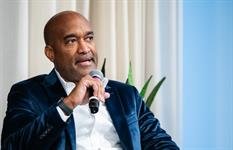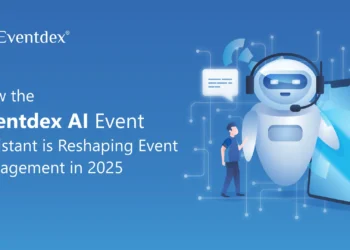
It’s been a wild year — and we’re only halfway done.
The first half of 2025 has moved with intense speed. The twists and turns of the year have left many communicators breathless. So as we head into the downhill slide toward 2026, let’s pause and reflect on what we’ve learned.
We asked communicators on LinkedIn to share the biggest surprises and lessons of the year so far. Here’s some of the most interesting responses, lightly edited for brevity and style.
AI
How quickly generative AI has begun impacting comms and PR strategies. With Google search being cannibalized, PR and earned media is more important than ever in terms of building credibility and visibility.
Anne Clawson, principal and head of policy & government affairs practice, Cascade Advisory
I’d say the biggest (surprise) would be the range of AI ethical situations and implications we’ve seen across industries from fake summer book lists to awards being rescinded. We are seeing more awareness of AI being used in the industry, but it shows that education and literacy are still much needed at all levels. Karen Freberg, professor of strategic communication, University of Louisville
Biggest surprises:
- AI resuscitating the press release as a source of influence. Press releases have always had their place, despite at least a quarter century of people declaring them dead. But now they’re influencing AI’s perception of your brand. You still need substantive news, a good story, and clear messaging though.
- How much ink was spilled in defense of em dashes. I too am a serial over-dasher, but had no idea the dash was so beloved. They’re not necessarily a sign you used AI, but at least half of the dashes AI writes should be commas or cut from the sentence entirely.
Fran Merlie, editorial, content and AI at Gregory FCA
For me, I think the main lesson is that comms teams want to be at the forefront of the AI discussion. It may be slightly self-serving — I mean, the narrative that ChatGPT can write as well as anyone isn’t a great story for an industry built on words. But perhaps more than with previous disruptions, comms leaders want to drive the internal thinking around AI use rather than just be impacted by it. And that is rolling into both the requests we see day to day, and is a bigger part of all RFPs I’m seeing come out.
Tim Scarfe is SVP & West Coast lead for Source Code Communications
How you have to be Speedy Gonzales to keep up with all the AI developments and how it impacts PR.
Sharmin de Vries, founder of Sharing PR
Media
The biggest surprise I faced: Working with a talented, science reporter year over year at a global news outlet who was suddenly laid off on account of AI. It was especially disheartening to not have the opportunity to publish the stories that were already in progress. Media outlets I am finding more and more do not have business models that support their growth or have contingency plans to protect talent and their news outlets. Yes, everyone’s talking about it, but having multiple stories killed… that hasn’t happened before. AI is not going to replace science reporting any time soon, and I think these outlets will have to later rehire talented and experienced writers they thought they could do without.
Aparna K. Paul, director of communications at Society for Science
Still, despite all the levers we can pull and knobs we can turn to help our clients engage their target audiences, nothing — and I mean nothing — matches the joy and feeling of success as much as an earned hit.
Alan Dunton, SVP and partner at FleishmanHillard
One of the biggest wake-up calls in 2025 is that tier 1 earned media is no longer the holy grail for elevating B2B tech, cybersecurity and telecom brands. Geopolitical tensions, national security concerns and U.S. industrial policy have consumed coverage in outlets that once welcomed stories about innovation and partnerships.
In this new environment, smart communicators are shifting focus — investing in owned content, influential niche media, and stakeholder engagement that bypasses the noise and speaks directly to buyers, policymakers, and partners.
The lesson? If your brand story depends on a NYT or CNBC byline, it’s time to rethink your PR playbook.”
Kevin R. Petschow is president and chief storytelling officer at KRP Marketing Communications
Not a surprise but the shrinkage of journalists makes hyper-targeted, well-developed pitches even more critical to secure coverage. As a result of that shrinkage, at the beginning of the year, we began investing more time researching and developing relationships with nontraditional and niche media which is starting to pay off. I don’t see that trajectory changing. More about quality than quantity and reaching audiences where they are in this very noisy environment.
Catherine Cody is public relations and field marketing manager at National Forest Foundation
The traditional media hierarchy is (somewhat) out the window. AI engines are the newest battleground for PR. And with hyper-niche blogs (that likely didn’t even register as a target historically) heavily influencing AI visibility, outlets are being re-tiered and re-prioritized. PR needs to balance those technical factors with comms that build emotional resonance.
Sarah Babbitt, vice president of agency marketing at SHIFT Communications
THAT. PRESS. RELEASE. IS. NOT DEAD.
I WOULD SAY IT LOUDER. I WOULD SAY IT A THOUSAND TIMES.
Ayesha Zahid is a community liaison/communications professional for the British High Commission in Pakistan
Strategy
Social listening is important, but it should not be confused with being representative of your audience(s). Our algorithms give us all a confirmation bias and we shouldn’t simply react to it. Deeper understanding of key audiences and the personas that make them up (and real data from them) should guide strategy.
Jay Weisberger is communications leader, external communications at DPR Construction
Clients are starting to care more and more about visibility in forums like Reddit and Quora since Google is giving more weight to these sites in the search results. We’ve had to strategize ways to get our clients engaged in conversations in a way that adds value to these communities and isn’t overly promotional.
Alex Creek is senior digital PR lead at NP Digital
Two big surprises to me are:
- The continued fragmenting of the media ecosystem is driving more brands and organizations to beef up their content and owned media libraries, while also forcing them to seek coverage with non-traditional media platforms like podcasts or Reddit threads.
- How much of the U.S. (and international) political polarization is filtering into the private sector and forcing brands to reevaluate their engagement in social issues, diversity initiatives or activism (see Target vs Costco). It’s not enough to be performatively engaged on an issue. If you are going to weigh in on politics or social causes, you need to be damn sure you’re ready for the risk (or reward).”
Travis Peterson is founder of Impact Campaigns
Crisis and risk
The biggest (and disheartening) surprise has been the continued escalation of divisiveness and societal polarization. This isn’t an occasional challenge anymore; it’s a constant and complex backdrop for PR. Coupled with the rapid expansion of our digital landscape, the speed at which minor issues become major controversies is something we have not seen before. For PR teams, shifting from reactive issue management to proactive ‘fire-prevention’ strategies is crucial.
Katie Huang Shin is president of Big Valley Marketing
One of the biggest things I’ve noticed in the first half of 2025 is a rise in clients wanting to get ahead of potential crises and develop crisis communications plans. There’s been more interest in proactive crisis planning and more actual demand for it too. Whether it’s the political climate or just how fast things move online, organizations seem more aware of the risks and are taking steps to be prepared.
Lauren Hepburn is public relations manager at LevLane
The biggest lesson of 2025 so far for PR professionals is the need for us to be comfortable with understanding public policy and political issues affecting our clients and organizations so that we can plan for rapid responses to developments that affect our external and internal stakeholders. This is essential as near-daily policy developments and changes, particularly at the federal level in the U.S., are impacting the business of every organization. The days of thinking that policy issues affect only the government relations team are long over.
Myles Goldman is a healthcare communications professional.
Thought leadership
Pleasant surprise. But authentic personal brand building is still so important. I’ve made it a point to be consistent and intentional in my posting, commenting and engaging this year. Sometimes it feels like you’re speaking into the void and you feel lame. But then, I will be out at coffee or speaking to a client or a prospect and they’ll specifically mention something that I shared in a LinkedIn post. They note how it was thought-provoking, how it inspired them or how it was good to learn more about our company or team. And that makes it all worth it. So keep at it.
Sarah Schmidt is president at Interdependence PR
“One of the biggest shifts I’ve noticed this year is that thought leadership is no longer solely about being the smartest voice in the room. With AI, it’s become more about being the most human and providing a take AND takeaway(s) on something timely happening!
Bri Carlesimo is vice president of client experience at Pierce PR
The post These were communicators’ biggest surprises of 2025 so far appeared first on PR Daily.












